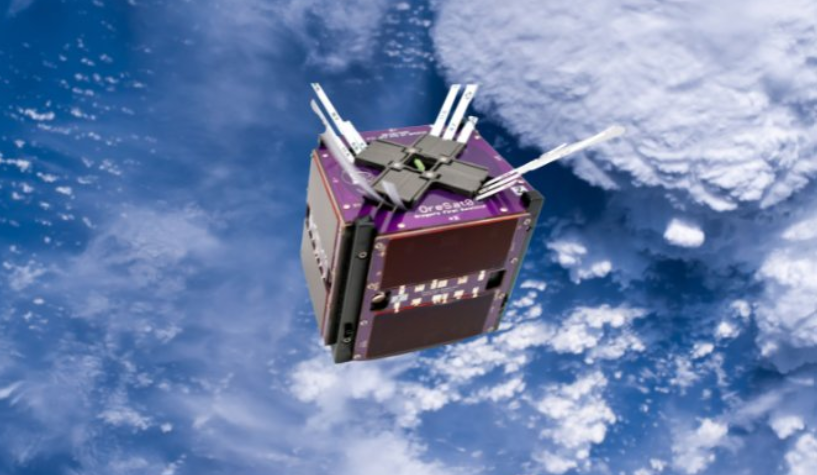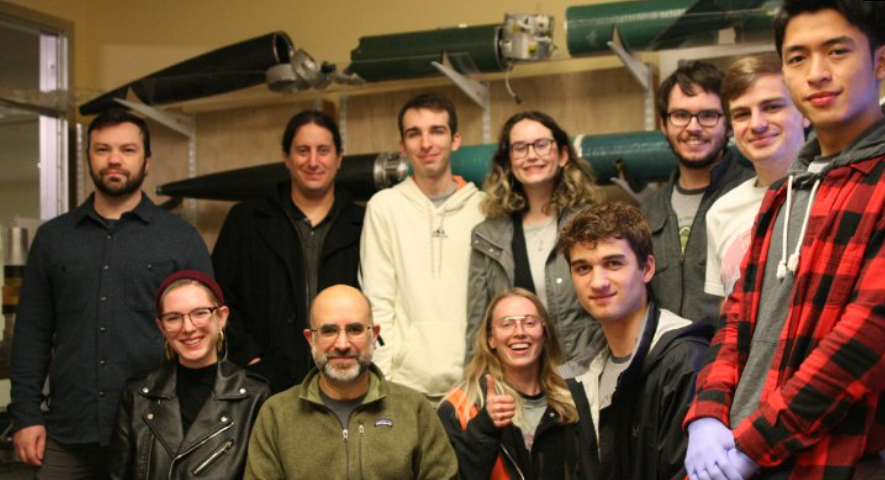The Portland State Aerospace Society (PSAS) has used 3D printing technology to successfully launch OreSat0, a CubeSat system, into low Earth orbit.
PSAS manufactured the satellite’s critical subsystems using CRP Technology‘s Windform LX 3.0 composite material and industrial 3D printing. The subsystems included a reliable deployer for their tri-band turnstile antenna, a star tracker lens and sensor assembly, and a compact battery pack. The team used low-cost Fused Deposition Modeling (FDM) machines for prototyping before transitioning to Selective Laser Sintering (SLS) with Windform LX 3.0. OreSat0.5 will launch in October 2023, and OreSat1 is scheduled to deploy from the International Space Station (ISS) in early 2024.
“OreSat is our fully open source, modular, and re-usable CubeSat system designed for educational teams,” said PSAS members. “OreSat uses a card cage system, which allows cards to be reused on different missions from 1U to 3U CubeSats. Cards include everything you would expect aboard a CubeSat: an onboard computer with multi-band radios, a battery pack, a star tracker, a GPS receiver, and the beginnings of an attitude determination and control system (ADCS). Solar modules are mounted on the outside of the Aluminum frame, along with deployable omnidirectional antennas.”
“We were absolutely thrilled to find CRP Technology’s Windform LX 3.0 composite material and CRP USA. With Windform LX 3.0, we could design the parts for 3D printing, run quick turns to prototype on local printers, and then print our final engineering and flight units out of Windform,” added PSAS members.

Windform LX 3.0 allows 3D printing of critical subsystems for OreSat0
PSAS chose Windform LX 3.0, a glass fiber-reinforced material from the Windform TOP-LINE range of composite materials for the Powder Bed Fusion (PBF) 3D printing process. The SLS process produced parts that performed well in harsh environment testing, such as 14g of random vibration in all three axes and thermal vacuum cycling from -40 to +80°C.
PSAS members said, “There was no way we would have been able to get the packing density of three bands with four elements each in anything other than a 3D printed, non-conductive process. We don’t know of any other satellite with this kind of antenna density.”
According to CRP USA, the 3D printed parts met the low earth orbit’s severe vibration, outgassing, and thermal performance requirements. PSAS believes 3D printing has aided in accelerating the revolution in the production of kilogram-class satellites, like CubeSats. These CubeSats now have capabilities previously only available on larger 100 to 1,000 kg class satellites. OreSat0 is the latest CubeSat launched by multiple countries, companies, and universities worldwide.
Portland State University’s PSAS is an open-source, interdisciplinary student aerospace project. The OreSat bus is an open-source, modular, and reusable CubeSat system for academic teams that provide a DIY platform for designing and building 1U to 3U CubeSats. PSAS is currently working on three missions, all of which are based on the OreSat bus.

Revolutionizing satellite manufacturing with 3D printing
Creatz3D, a Singapore-based 3D printing service provider, unveiled a novel, ultra-lightweight satellite launch container. The novel structure, created in collaboration with partners Qosmosys and NuSpace, was intended to house 50 gold-anodized artworks that were later fired into orbit by SpaceX to commemorate the 50th anniversary of the Pioneer 10 probe launch. Using 3D printing, the companies could decrease the mass of the satellite holder by over 50% while drastically lowering its cost and lead time.
3D Systems, a 3D printer OEM, joined forces with Fleet Space, an Australian satellite developer, to 3D print radio frequency (RF) patch antennas for the latter’s Alpha satellites. 3D Systems’ Application Innovation Group (AIG) specifically assisted Fleet Space in taking its design and transitioning it to small batch production in three weeks using the DMP Flex 350 metal printer. Fleet Space is purchasing a DMP Flex 350 for its headquarters in Beverley, Adelaide, with the intention of eventually bringing patch antenna manufacturing in-house. The 3D printed antennas will be an essential part of each satellite in Fleet Space’s Alpha constellation, which is scheduled to launch into low earth orbit (LEO) in 2023.
What does the future of 3D printing for the next ten years hold?
What engineering challenges will need to be tackled in the additive manufacturing sector in the coming decade?
To stay up to date with the latest 3D printing news, don’t forget to subscribe to the 3D Printing Industry newsletter or follow us on Twitter, or like our page on Facebook.
While you’re here, why not subscribe to our Youtube channel? Featuring discussion, debriefs, video shorts, and webinar replays.
Are you looking for a job in the additive manufacturing industry? Visit 3D Printing Jobs for a selection of roles in the industry.
Featured image shows the OreSat0. Image via PSAS.


